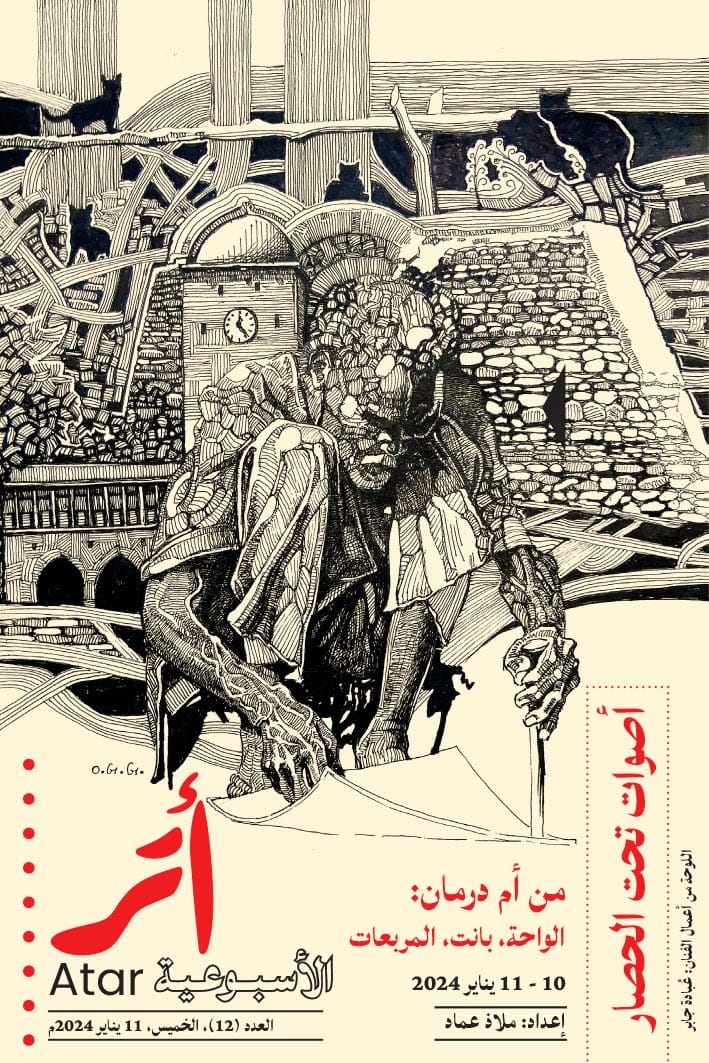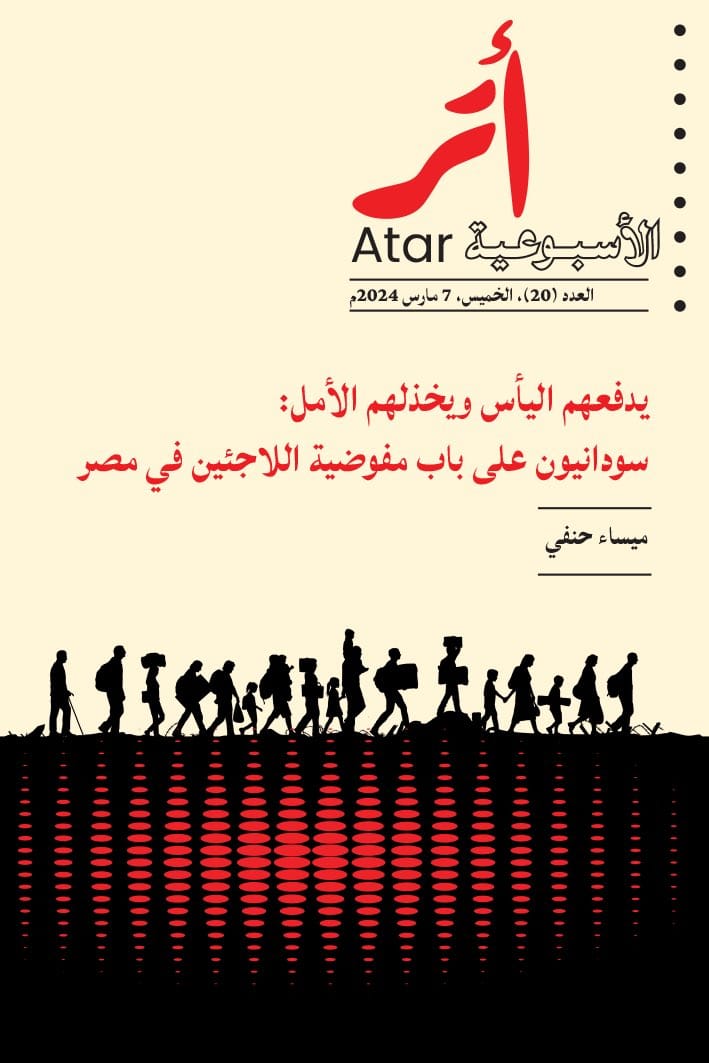Recommended Reading—Atar


The contributors for MER Issue 310 have relied on their own experiences in Sudan, their personal networks and a few important news sources to inform their grounded analyses.

One of these sources that drew the editors' attention is Atar: a Sudanese publication started six months after the war began. Atar has managed to put out near weekly publications in Arabic (and now has an English periodical as well). Its grounded perspective and focus on political economy makes it an important resource for MERIP's writers and readers alike. Read a bit about the publication from its lead editor, Amar Jamal.
MERIP: When did you start publication in Arabic and English?
Amar Jamal: The first Arabic issue (weekly) was published on October 12, 2023, while the English edition (bi-monthly) began on March 25, 2024. We intentionally stopped the publication for three weeks after issue 10 for assessments and also this week, as we are working on a special issue for April 15 to mark the year of war.
MERIP: How would you describe the publication? What is unique about it, and what are the key themes you explore?
Amar: I think the question of truth is what concerns all journalism. The truth is a prominent victim of war propaganda. But truth is also dynamic. For example, in the first issues of Atar magazine, we wanted to highlight people's courage in facing the repercussions of war: How they eat, drink and sleep. The Sudanese have shown unique courage in this regard, especially through collective action. What was unique about Atar was to highlight this courage. But seeking truth requires talking not only about agency but also structures. Here, the broader picture of Atar and how it uses OSINT (open source intelligence) is key. While addressing the many dimensions of current events, the magazine tries to engage in three questions: the day before the war (how did we reach here?), what happened the day following the war and what should happen the day after the war? Perhaps this is what all war journalism should do.
MERIP: Who are your writers and editors, and where are they based?
Amar: The magazine started with four correspondents, three of whom were inside Sudan, and three editors in East Africa. The company is registered in Nairobi. We currently have 24 reporters and seven editors. We will start our third fellowship program in the coming weeks, for which we have selected five young people who want to start their media careers, out of more than seventy applicants. The fellowship, which will be every six months, is one of our plans to expand and improve our publications with more and better quality editors, reporters, data analysts and visual artists. In addition to the magazine, we have released a number of podcasts that are available on our platforms. Finally, the magazine's website will be launched next week.

MERIP: What are the main challenges in getting the weekly issues out? How do you do it?
Amar: The most important challenge is protecting our resources and correspondents. Two of the first three correspondents had to leave Sudan due to security harassment. Accessing and fact-checking information also are a major challenge for the press working in Sudan now, which is made more difficult by the interruption in communications and internet.
MERIP: What are a few of the important pieces you've published?
Amar:
Read the previous article in MER issue 310 “The Struggle for Sudan.”








